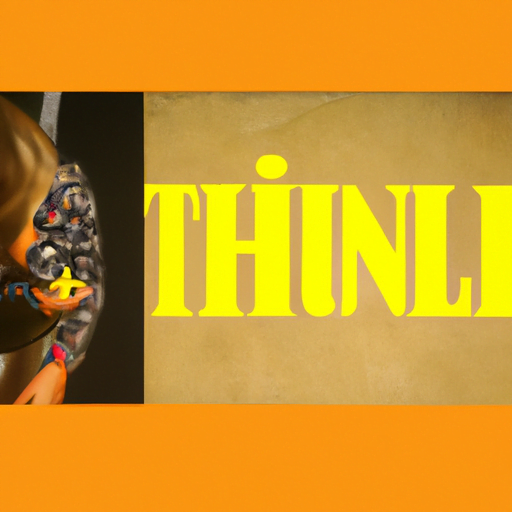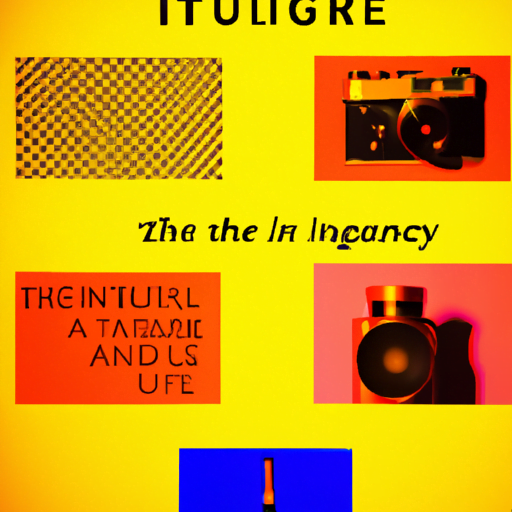
-
Table of Contents
- The Influence of Typography in Fashion Design
- The Power of Typography in Fashion
- Case Studies: Typography in Fashion
- 1. Chanel
- 2. Supreme
- 3. Vogue
- The Role of Typography in Fashion Branding
- 1. Font Selection
- 2. Custom Typography
- 3. Logo Design
- The Future of Typography in Fashion
- 1. Experimental Typography
- 2. Responsive Typography
- 3. Personalization
- Conclusion
The Influence of Typography in Fashion Design

Typography plays a crucial role in the world of fashion design. It is not just about choosing the right font for a logo or a tagline; it goes beyond that. Typography has the power to convey emotions, create brand identities, and enhance the overall aesthetic appeal of a fashion brand. In this article, we will explore the influence of typography in fashion design and how it can make or break a brand’s image.
The Power of Typography in Fashion
Typography is the art and technique of arranging type to make written language legible, readable, and visually appealing. In the context of fashion design, typography is used in various aspects, including branding, packaging, advertising, and even garment design. Here are some ways in which typography influences the world of fashion:
- Brand Identity: Typography plays a crucial role in establishing a brand’s identity. The choice of fonts, letterforms, and typographic elements can communicate the brand’s personality, values, and target audience. For example, a luxury fashion brand may opt for elegant and sophisticated fonts, while a streetwear brand may choose bold and edgy typography.
- Emotional Connection: Typography has the power to evoke emotions and create a connection with the audience. Different fonts have different personalities and can convey a range of emotions, such as elegance, playfulness, or boldness. By carefully selecting the right typography, fashion brands can create a visual language that resonates with their target customers.
- Visual Hierarchy: Typography helps establish a visual hierarchy in fashion design. It guides the viewer’s eye and directs their attention to specific elements. For example, in a fashion magazine layout, the use of different font sizes and styles can highlight headlines, subheadings, and body text, making the content more scannable and engaging.
- Legibility and Readability: In fashion design, typography should not only be visually appealing but also legible and readable. Whether it’s a clothing label, a website, or a fashion show invitation, the text should be clear and easy to understand. Fashion brands need to strike a balance between creativity and functionality when choosing typography.
Case Studies: Typography in Fashion
Let’s take a look at some real-life examples of how typography has influenced fashion design:
1. Chanel
Chanel is a renowned luxury fashion brand known for its timeless elegance. The brand’s logo, which features interlocking “C”s, is one of the most recognizable symbols in the fashion industry. The typography used in the Chanel logo is a custom-designed font called “Chanel Sans.” It is a clean and sophisticated typeface that perfectly embodies the brand’s image of luxury and refinement.
2. Supreme
Supreme is a streetwear brand that has gained a cult following among the youth. The brand’s logo, which features the word “Supreme” in bold, italicized letters, has become an iconic symbol of street culture. The typography used in Supreme’s branding is bold, edgy, and instantly recognizable. It reflects the brand’s rebellious and urban aesthetic, making it highly appealing to its target audience.
3. Vogue
Vogue is a leading fashion magazine known for its high-end editorial content and stunning visuals. Typography plays a crucial role in Vogue’s layout and design. The magazine uses a combination of serif and sans-serif fonts to create a sense of elegance and sophistication. Headlines are often set in bold, eye-catching fonts, while body text is kept clean and legible. The careful use of typography enhances the overall reading experience and reinforces Vogue’s status as a fashion authority.
The Role of Typography in Fashion Branding
Typography is a powerful tool in fashion branding. It helps create a distinct visual identity and sets a brand apart from its competitors. Here are some key aspects of typography in fashion branding:
1. Font Selection
The choice of fonts is crucial in fashion branding. Different fonts have different personalities and evoke different emotions. Fashion brands need to carefully select fonts that align with their brand’s image and target audience. For example, a luxury brand may opt for elegant and refined serif fonts, while a casual brand may choose playful and modern sans-serif fonts.
2. Custom Typography
Many fashion brands invest in custom typography to create a unique and recognizable brand identity. Custom fonts allow brands to have complete control over their visual language and ensure consistency across all touchpoints. For example, Louis Vuitton has its own custom-designed font called “Louis Vuitton Malletier,” which is used consistently across its branding materials.
3. Logo Design
Typography plays a crucial role in logo design for fashion brands. A well-designed logo can instantly communicate a brand’s personality and values. Fashion brands often create custom logotypes or wordmarks using unique typography. The logo becomes the face of the brand and is used across various applications, such as clothing labels, packaging, and advertising.
The Future of Typography in Fashion
As fashion continues to evolve, so does the role of typography in the industry. Here are some trends and predictions for the future of typography in fashion:
1. Experimental Typography
With the rise of digital platforms and social media, fashion brands are becoming more experimental with typography. They are pushing boundaries and exploring unconventional fonts, layouts, and typographic treatments. This trend allows brands to stand out and create a unique visual language that resonates with their target audience.
2. Responsive Typography
As fashion brands expand their online presence, responsive typography becomes increasingly important. Responsive typography refers to the ability of text to adapt and adjust based on the device and screen size. Brands need to ensure that their typography remains legible and visually appealing across different devices, from smartphones to large desktop screens.
3. Personalization
Personalization is a growing trend in the fashion industry, and typography can play a role in this. Brands can use custom typography to create personalized experiences for their customers. For example, Nike’s “Nike By You” campaign allows customers to customize their sneakers, including adding personalized text. This customization creates a sense of ownership and uniqueness.
Conclusion
Typography is a powerful tool in fashion design and branding. It has the ability to convey emotions, create brand identities, and enhance the overall aesthetic appeal of a fashion brand. From brand logos to magazine layouts, typography plays a crucial role in establishing a brand’s image and connecting with its target audience. As fashion continues to evolve, typography will continue to play a significant role in shaping the industry’s visual language and creating memorable brand experiences.
